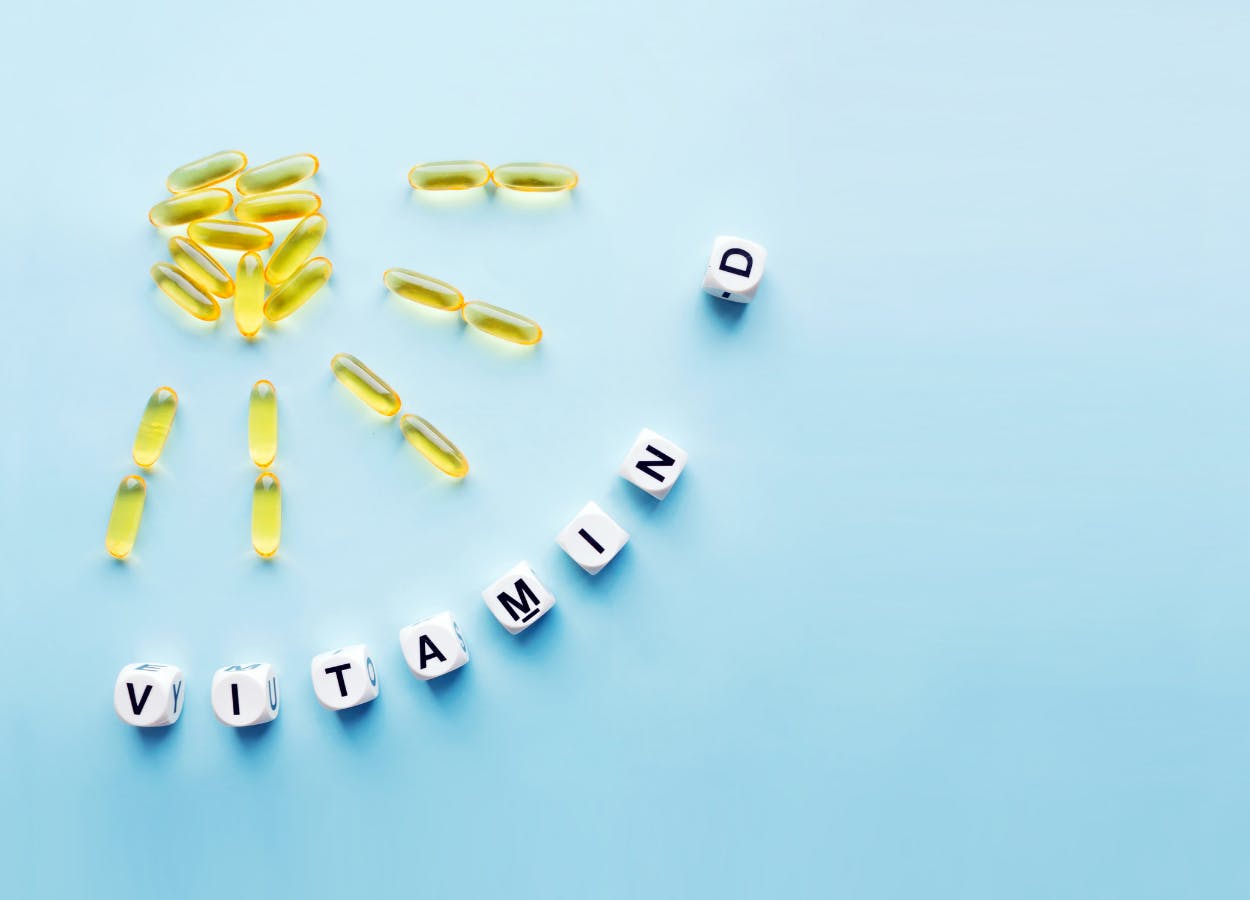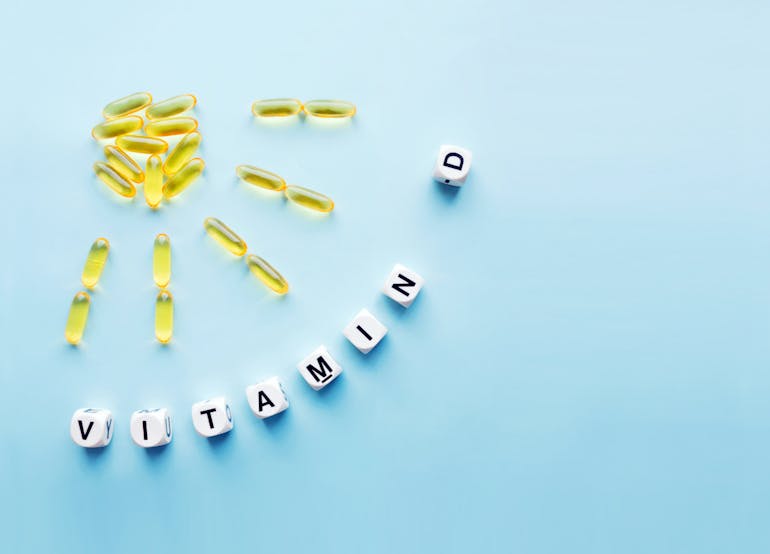Why is low vitamin D a problem?
Reviewed and fact-checked by Giulia Guerrini, Superintendent Pharmacist. Read our editorial policy to see how we create informative, accurate content.
Vitamin D is important for keeping your body healthy. You can increase Vitamin D through the food you eat and by spending time in the sun. But with the seasons and weather changing – or even just due to working from home – you could end up with vitamin D deficiency. But why is this a problem, anyway? In this guide, we’ll cover how low vitamin D can cause health problems – and what it means for your body.
What is Vitamin D?
Known as the sunshine vitamin, Vitamin D is one of the most important vitamins and is a key part of keeping our bodies healthy. Vitamin D helps to regulate our amount of calcium and phosphate, which are needed to keep bones, teeth, and muscles healthy; it even has a role in our body’s nervous, muscle, and immune systems.

What causes Vitamin D deficiency?
There’s quite a few reasons you can have low vitamin D, including:
- Lacking vitamin D in your diet
- A malabsorption problem causing your body trouble when absorbing vitamins from the food you eat
- You don’t get enough exposure to sunlight
- You're taking medication that is interfering with your body’s ability to absorb vitamin D
What other factors can cause low vitamin D?
As well as diet or the sun, some factors mean some people are naturally at a higher risk for being deficient, according to the Cleveland Clinic. These factors include:
- Age: As you age your skin doesn’t make vitamin D as well when exposed to the sun and your kidneys are less able to convert the vitamin.
- Weight: Having a higher body fat percentage can bind some vitamin D, preventing it to getting into the blood.
- Diet: If you follow strict diets, like a vegan or vegetarian diet, you’re more likely to be low in vitamin D – as most of the foods that are rich in vitamin D are animal based.
- Mobility: If you’re homebound or rarely get outside, you’ll get less sun exposure.
- Skin Colour : Darker skin tones are less able to make vitamin D from sun exposure than lighter skin tones.
- Breastfeeding: Human milk only contains a small amount of vitamin D, so breastfed infants can be at risk for low vitamin D.
- Diseases: Diseases such as some cancers, cystic fibrosis, Crohn’s, celiac, tuberculosis, kidney, and liver diseases don’t allow the body to change or absorb vitamin D.
What are the signs and symptoms of low vitamin D?
Signs of low vitamin D are more obvious in children and can be very subtle in adults – keep a look out for any of these symptoms:
- Having a low immune system
- Fatigue and tiredness
- Bone and back pain
- Muscle weakness, aches, and pains
- Depression, anxiety, and overall low mood
Is vitamin D deficiency serious?
Although having low vitamin D is very common and can easily be treated, serious deficiency in vitamin D can cause a wide range of health problems. Because vitamin D is important for your bones, nervous, muscle, and immune systems, a lack of vitamin D can disrupt a lot in your body. For example, low vitamin D can lead to a loss of bone density, which can contribute to diseases such as osteoporosis and bone fractures.
According to MedlinePlus, severe deficiency in vitamin D can also lead to diseases. In children, low vitamin D can cause rickets, which is a rare disease that causes bones to soften and bend. In adults, extreme low vitamin D can cause osteomalacia, which softens bones as well and causes weak bones, bone pain, and muscle weakness. Having severe vitamin D deficiency is also connected to several medical conditions including diabetes, high blood pressure, heart disease, cancer, and autoimmune conditions.
As you can see, having low vitamin D can become an issue fast – so it is important to keep your vitamin D levels up.
How can I get more vitamin D?
The easiest way to increase your vitamin D levels is spending more time outside in the sun – but don’t forget to wear sunscreen, as too much sun can be dangerous (we’ve got a really great read on How to (and why you should) Wear Sunscreen, too). You can also increase your vitamin D levels by eating foods rich in vitamin D which include fatty fish, red meat, cheese, mushrooms, egg yolks, and fortified foods, such as some fat spreads and breakfast cereals.
The best way to increase your vitamin D is by taking vitamins or supplements which can be found in a range of different formats. Here are a few of our (and your) favourites:
- For chewable tablets, check out Evacal D3 1500mg chewable 56 Tablets
- For traditional Vitamin D pills or tablets, try Valupak Vitamin D3
- Easy-to-take and great for all ages, Vitamin D liquids are getting really popular. Check out one of our best sellers, Nutri Advanced D3 Drops with K2 30ml.
- As we said before, if you follow strict diets such as veganism or vegetarianism it can be difficult to get vitamin D from foods – so taking supplements is the best option. You’ll find great options with us, from Cytoplan vegan vitamin D supplements to Cytoplan vitamin D tablets for vegetarians.
Struggling to get enough? That's where supplements come in: take a look at our vitamin D supplements to help you get the vitamin D you need. And don’t forget – if you order today, we can deliver tomorrow!

